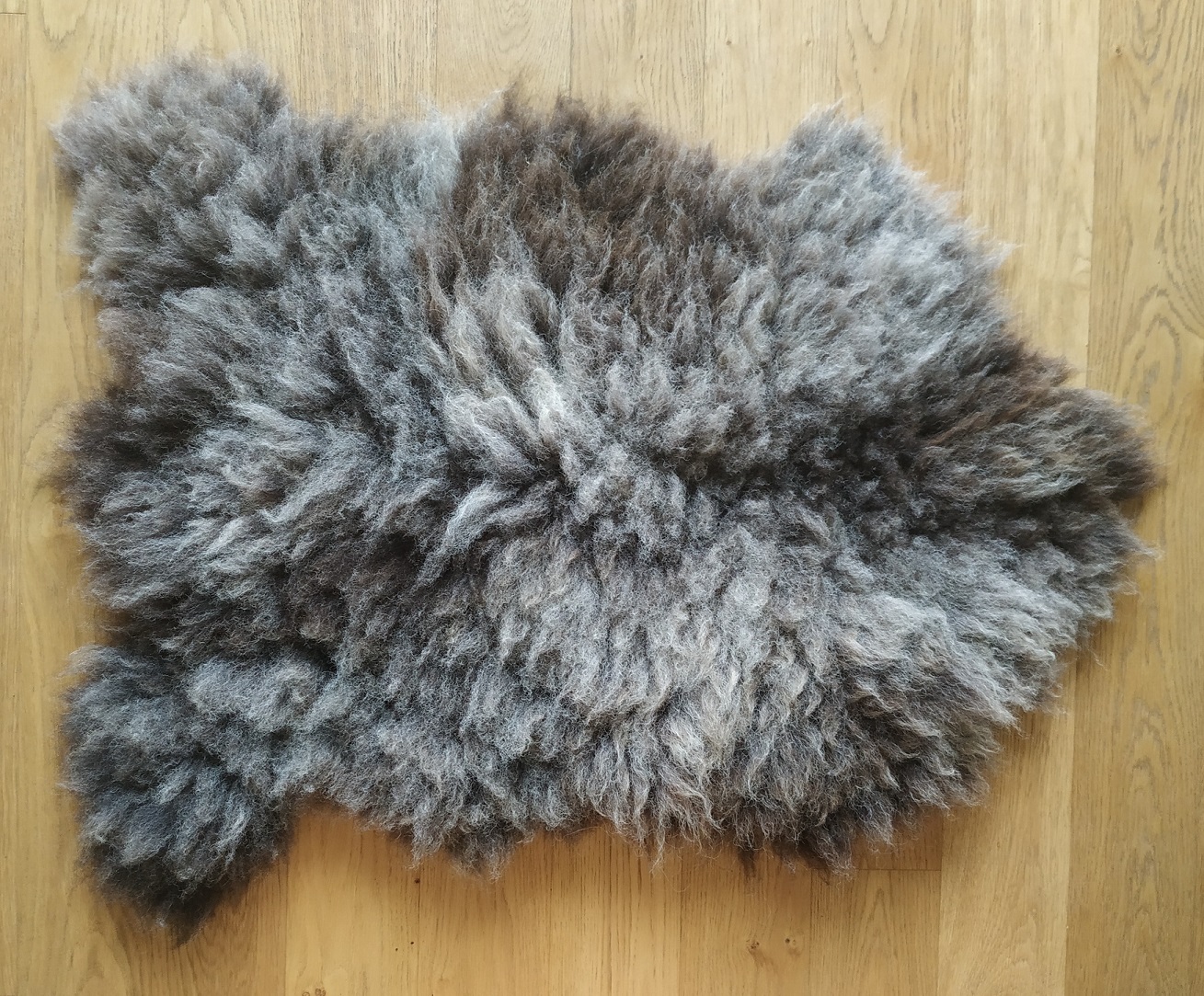Many of the fleeces I work with come from friends of ours who would rather give me their fleeces than put them on the compost heap. A small digression, but it’s a sad fact that British wool has practically no value these days. This is due to many reasons which I won’t go into here. But simply put, the value of wool has plummeted so much that it barely covers the cost of shearing. Farmers receive in the region of £1 – £1.50 per kilo.☹ This is very sad considering that wool is such an incredible natural fibre with so many uses. British wool in particular, is hugely varied as we have so many different breeds of sheep, all producing different types of wool.
Large farms with hundreds of sheep send their fleeces off each year to “British Wool” who sort them, grade them and then auction them. Many smallholdings however, (like us) prefer to use their fleeces in creative ways in order to make their sheep more sustainable. Smallholders are continually looking for ways to “live off the land” and using fleeces creatively often gives something back to pay for hay, lick buckets, sheep nuts and all those things that sheep need.
I am extremely lucky to be able to buy in some fleeces each year from local farms. This not only gives me a variety of wool to work with which makes life more interesting, it also gives me a sense of ‘rescuing fleeces’; saving a few lucky ones before they disappear into the ‘great unknown’, or end up on a compost heap at the bottom of the garden.
But taking other peoples’ fleeces means I can’t be sure they’re 100% chemical free as ours are. So for this reason I embarked on a “chemical trail”. I wanted to know about the persistence in the fleece after shearing, of the chemical in the product “Clik” commonly used for ‘fly strike’.
In the past, sheep were dipped from head to hoof to give them protection from parasites, one of the nastiest being the Blow Fly. Nowadays dipping is no longer compulsory since the introduction of gentler methods of parasite control.
Dipping or no dipping, I am still nervous about chemicals and so we choose not to use them. Organic control however, is really only possible if you have a small number of sheep because it means you have to physically check them each day, twice during the summer months. What we are looking for is evidence of Blow Fly activity which can be subtle and easy to miss. If missed, a sheep can perish in as little as two days. It’s easy to see why farmers and smallholders reach for the chemicals, it is in the best interest of the animal because honestly and truly, there is nothing worse than seeing a sheep being eaten alive by maggots.
Back onto my “chemical trail”. The common way to protect sheep from Blow Fly is to spray them using a product called “Clik”. This is a gentle treatment, all you do is gather up your sheep and spray them along the back, and the rump. The chemical then gets to work and spreads systemically through the entire fleece via the lanolin. It lasts for 16 weeks so you only need to use it once a year, in the spring just before the Blow Fly starts to become active.
I wanted to know how long this chemical lurked in the wool fibres and whether it washed out in hot water and detergent. So, I contacted “Elanco Vets” and so began the slippery slope to becoming a bit of a “Clik anorak”!
Here’s what I discovered:
The chemical in “Clik” is called “Dicyclanil”.
Dicyclanil works by binding to the lanolin in the fleece.
Dicyclanil becomes more effective after gentle rain because the water helps to disperse it through the lanolin reaching all areas of the animal. (This would be similar to squirting a sheep along the back with washing up liquid. It would naturally start seeping in and working its way through the wool, but it would disperse better after some gentle rain).
Regarding how long Dicyclanil lingers in the wool after shearing, I was informed that “the UK has no legislation regarding the withdrawal time for topical products in the fleece and as such there is very little information on Clik’s persistence after shearing. However, as it works by binding to the lanolin in the wool it would make sense that if the lanolin is washed out in the felting process (which it is), then it is very likely that the Dicyclanil will have been too.”
You can find more information here: https://www.farmanimalhealth.co.uk/clik
I found this all rather interesting and will probably continue to do some delving, but in the meanwhile, I’m confident that any rugs I make from fleeces which have been sprayed with Dicyclanil are unlikely to contain any traces of this chemical after being washed in a lanolin removing detergent. For more details on how I wash my rugs, please click here.





